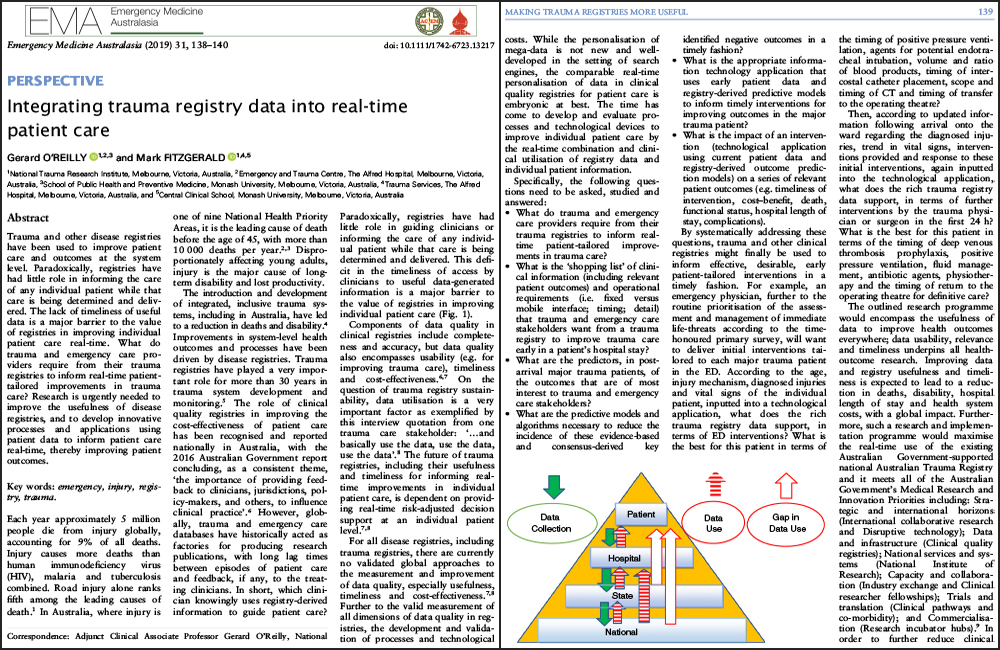
Integrating Trauma Registry Data into Real-Time Patient-Care
Abstract Trauma and other disease registries have been used to improve patient care and outcomes at the system level. Paradoxically, registries have had little role in informing the care of any individual patient while that care is being determined and delivered. The lack of timeliness of useful data is a major barrier to the value of registries in improving individual patient care real-time. What do trauma and emergency care providers require from their trauma registries to inform real-time patient tailored improvements in trauma care? Research is urgently needed to improve the usefulness of disease registries, and to develop innovative processes and applications using patient data to inform patient care real-time, thereby improving patient outcomes.
Each year approximately 5 million people die from injury globally, accounting for 9% of all deaths. Injury causes more deaths than human immunodeficiency virus (HIV), malaria and tuberculosis combined. Road injury alone ranks fifth among the leading causes of death. In Australia, where injury is one of nine National Health Priority Areas, it is the leading cause of death before the age of 45, with more than 10 000 deaths per year. Disproportionately affecting young adults, injury is the major cause of longterm disability and lost productivity.
Specifications
- Last Updated: 2019
- Author(s): Gerard O’Reilly, and Mark Fitzgerald
- Category: Registry Basics
- Tags: 2019, Emergency Medicine Australasia, English
PDF Documents
Please login to access file downloads.
